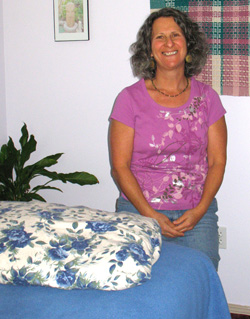TONASKET – State of the art technology may be coming to Tonasket.
The North Valley Hospital Board approved a feasibility study and will draft a lease plan for a General Electric brand 16 Slice CT Scanner.
The CT scanner was approved by the FDA in 2001. An estimated 50 million CT scans were performed world-wide in that year, according to a press release from GE.
“CT is one of the most popular diagnostic tools for medical professionals worldwide. CT scans combine the power of X-ray technology and computers, allowing physicians to view wafer-thin cross-sections of internal anatomy (commonly called “slices”) without the need for surgery,” according to company.
This system also has three times less radiation than previous machines, says GE.
The machine North Valley Hospital is considering is about $560,000, plus taxes. That price is 47 percent off the regular cost because of a bulk purchase made by other north-central Washington hospitals, said Mary Baechler, the radiology manager and staff technologist.
NVH will be the only imaging department in Okanogan County with a full time radiologist, Baechler said. A new doctor is arriving in August who will manage the machine.
“If we want to look at being world-class, then we need to look at imaging,” she said. “This machine will offer everything we need for urgent care.”
Baechler said they are currently performing about 80 CT scans a month using old technology. On the old machines, each one takes about 45 minutes. The new machine is far faster, scanning and sending out results in seconds.
“With this machine, the results will be out and on the doctor’s desk before the patient has even left the room,” she said.
The technology will also allow NVH to bring in other patients, said board member Dick Larson. The nearest such machine in Canada is in Kelowna, B.C. and he expects to see traffic pick up south of the border as Canadians seek out health care.
In construction news, architect Dave Franklund and building engineers were visiting the hospital Thursday and Friday. One major issue waiting for a board decision is on the heating and air conditioning units in the building.
The board has three options, Franklund said. The first is a hyndronic system that would cost the hospital $2.7 million. The second is an electric hydronic system and the third is a standard HVAC unit.
The hydronic system is the ideal one in terms of maintenance cost and life-cycle, but not in price.
“If we had an extra $2.7 million dollars, we would put that into surgery,” said hospital administrator Warner Bartleson.
A decision was needed in the next few days, Franklund said.
“This is really important,” he told the board. “I’m asking you to make a decision about something that’s not easy.”
Putting off the decision was not an option, as the heating system is integral to the building.
“If we don’t finish this building, the Department of Health won’t allow us to occupy any of it,” said Bartleson. “This is a huge risk, which you all need to understand.”
Finding funds was the biggest part of the problem. However, lack of time kept the board from seeking out grants or contacting the congressional delegation.
The board decided to hold the decision until at least the next day, when they would tour the hospital and see “mock up” rooms designed to resemble what the future rooms will look like.
Franklund said they would be meeting with city representatives soon to discuss the new parking lot and retaining wall. He said he expected a city decision to be made by mid-July and that the project would go out for bids by July 11. He didn’t foresee any problems with the plan and attaining city approval.
In hospital news, Kathy Swedberg gave a report on hospital and patient safety, specifically concerning falls in the hospital. Falls are tracked quarterly and are separated into superficial or substantial injuries – superficial injuries include scrapes and substantial injuries are things like fractures.
The number of hospital falls fell slightly in the first quarter of 2008 from their 2007 average. There were four falls from January to March 2008 and an average of 4.25 in 2007. A low point was reached in 2006, with 2.5 falls per quarter and the high point was 2004, with 6.7 falls per quarter.
Swedberg and other safety task members are working on several ways of working with patients prone to falls, including identifying them with red socks and working with them to discover why they fell and ways the hospital can remediate the issue.
“Our goal is zero injury from falls,” she said. “Patient safety has always been and continues to be our top goal. That’s why we come to work every day.”







